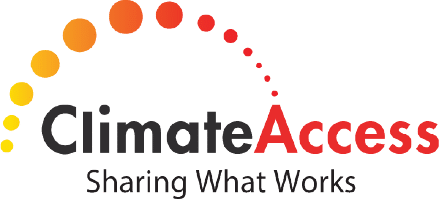I’ve been grappling for a long time with how to engage the public in understanding and acting on the risks associated with climate change. Last week’s Climate Access roundtable on how to communicate the risks associated climate change helped move along my thinking. Here are the big takeaways from the discussion and eight ideas on framing climate risks.
People are intimately familiar with the concept of risk and, every day, make decisions about a given risk’s probability and how to respond to it. This is the good news. We get risk and make decisions, often based on uncertainty, all of the time. On a societal level, our governments make decisions based on risk assessments and spend money to prepare for risks on a regular basis with far less certain information than what we now have on climate change where the vast majority of the world’s scientists have come to consensus. (Think Y2K as one fairly recent example.)
Using a risk assessment frame to engage decision makers and the public in conversations and efforts to prepare for climate impacts has potential if we can address a few key challenges.
As with communicating about so many issues, the messenger is critical when conveying climate risks. Climate security consultant Karen Silverthorne pointed out that the military have been the most trusted spokespersons in America for decades. If they weigh in on climate risk, it can go a long way. On the other hand, an environmentalist talking about national security and climate change is likely to upset some segments of the public and be considered a disingenuous construct.
Mindy Lubber, executive director of CERES and director of the Investor Network on Climate Risk, reminded us that messenger selection needs to be tied to selecting the right frames and messages for your target audience. For example, because the investment and finance community cares about financial risk and how best to manage that, political or environmental messages are not the way to go.
From George Haddow’s experience in disaster management as a consultant and former FEMA official, going local is key. People understand climate risks best when trusted local spokespersons are tying the probabilities to a topic with relevant local content (i.e. firefighters are climate heroes because they help communities prepare for and respond to fires and floods). As a result, partnerships are a critical component of any outreach strategy.
You might think that people’s direct experience with extreme weather events would drive interest in climate change but research shows that this is not necessarily the case. On the other hand, Ed Maibach, director of George Mason University’s Center for Climate Change Communication, pointed out that you can take advantage of “motivated reasoning” which is the finding that people who are concerned about climate change are more likely to pay attention to the increasing instability in weather patterns being reported in the media or those directly experienced.
So, what else can be done to take advantage of the opportunities of a climate risk frame and to avoid any down sides? Here are some considerations:
1) Information alone isn’t likely to increase awareness of and concern for climate risks. Processes need to be created that help bring together community leaders and stakeholders to understand and acknowledge their climate risk, to learn what can be done about the risks, and to develop action plans.
2) Research and practice show that fear-based appeals are problematic. While it is important to convey a sense of risk and urgency, it is equally important to emphasize what can be done to address the risk.
3) In particular, emphasize a sense of collective efficacy. Too many appeals focus on individual versus systemic change, which can leave people feeling overwhelmed and disempowered.
4) People need emotional and peer support to acknowledge and address climate risks. Citizen climate corps, climate stewards, climate masters and other volunteer community-based efforts work because they provide people with opportunities to connect with others who are assessing the impact of climate change on their lives.
5) Create opportunities for sector leaders to connect and speak out about climate risks. When investors representing trillions of dollars in clean energy assets gather and speak out, as recently happened at the Investor Summit on Climate Risk, it has an impact and allows other leaders to find their voice.
6) Weave the assessment of climate risks into existing processes (i.e. a governance issue, part of risk management plans, a factor in CEO compensation, etc.)
7) Regarding terminology, the idea behind “resiliency” is good but the word is murky—it means different things to different people a la sustainability. Try to find practical, every day terms to communicate climate risks. For example, swap mitigation for prevention and adaptation for preparedness. Be careful labeling someone a “climate denier” because it can upset constituencies that might still have some skepticism about climate exchange but may be open to discussing health, national security, extreme weather events, and other risks.
8) While it important to address people’s uncertainty about the way in which climate change might impact their lives, it is even more important to emphasize what we are certain about. As mentioned above, at least 95% of the world’s scientists agree climate change is happening and this point needs to be repeated loudly so we move on to agreeing on the risk scenario we need to be planning for.
Photo via (cc) Flickr user Kaibab National Forest.

